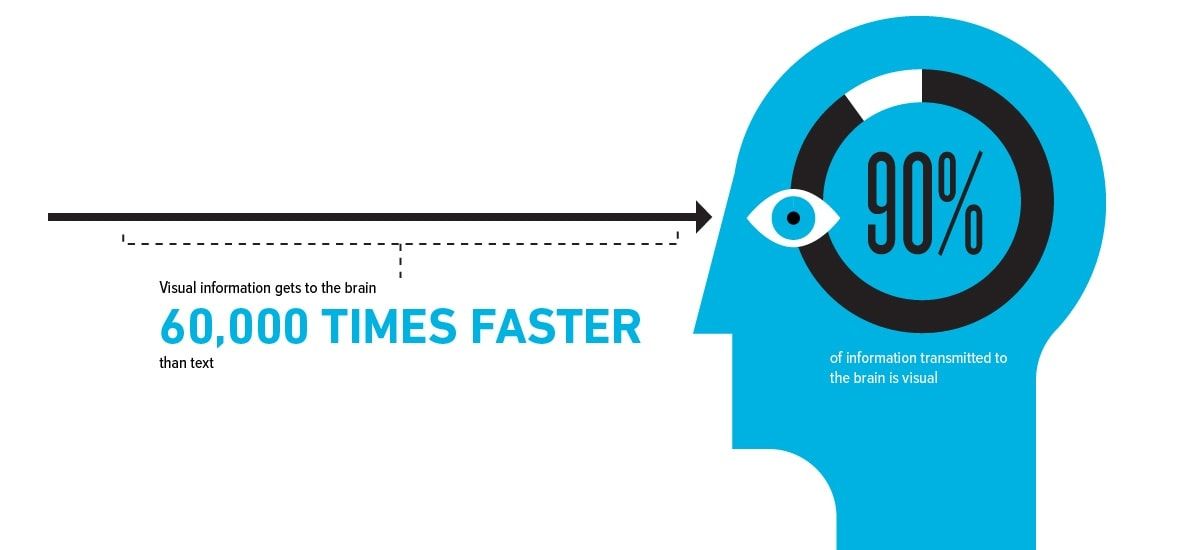Are prospective customers impressed and ready to take the next step when they meet with your sales team for the first time? Or are they underwhelmed because you’re the same as all your competitors?
If it’s the latter then clearly something needs fixing. In today’s market your business cannot afford to be just another supplier and leave prospective customers cold.
Whether you have a complex product range, diverse portfolios, a wide variety of audiences or sell across multiple industries or geographies, enabling your sales teams to access the right information at the right time when meeting with customers has never been more crucial.
Digital sales enablement tools allow salespeople to put their customers at the heart of every interaction, to have more focused, profitable and customer centric business conversations with customers.
Having the right information to WOW your customer
The moment your sales team first meets with a potential customer is the most important part of the entire buyer’s journey; by this point you’ll have invested a huge amount of time, money and effort into developing products, marketing them and nurturing leads.
The buyer will also have invested time and effort in researching suppliers to find the right fit. Those initial meetings between sales and the customer are crucial and will determine whether you can secure their trust and win their business.
“Before making a detailed supplier evaluation, 79% of buyers are already aware of at least three potential suppliers, and 86% already have a preference." - B2B Marketing
When meeting with customers, there is a narrow window of opportunity to impress and in that narrow window it is important to demonstrate your businesses capabilities; the value your business can deliver to the customer and the opportunities you bring.
Any information the customer needs should be accessed instantaneously, personalised and in a visually compelling experience that leaves them empowered, visibly impressed and keen to move forward.
“97% of senior decision-makers said the professionalism of a potential suppliers presentation was very important or important in awarding a contract” - RSW New Business Survey
So, how do you make sure the customer walks away impressed?
The key is to give your sales team and the customer everything they need to support their conversations and create the WOW and an interactive sales tool is the backbone of this. It acts as a window into the core of your business and brings your proposition to life.
A great sales tool needs to be built around three parties:
- Your customer
- Your sales team
- Your business
And, it must seamlessly connect and work for all three together
The advantages of digital sales tools for your customer
Gives them a personalised sales experience
This is probably the single most important element for your customer.
Firstly, they want to feel that you’re addressing their challenges and requirements specifically, and not being presented with generic information. They want to know that what the sales rep is presenting is specifically tailored around them, their role, their needs, their business and their industry sector.
Personalisation helps with familiarity – your customers will quickly understand the proposition if it’s presented to them within a familiar format, using terminology and visuals that they understand and that resonate. This is all the more important if some of the decision-makers are not technical experts in your field.
A personalised experience is memorable – it will be much easier for your customer to remember the salient points of the proposition and be able to articulate and sell it internally to other key decision-makers if you use visuals that are easy to recall. Nobody remembers a list of bullet points.
A flexible narrative
You can never second guess a customer and know exactly what they are interested in or thinking. An interactive sales tool means it isn’t necessary create a linear presentation and hope that all the salient points are covered.
Interactivity allows your sales rep to take a different route as the conversation progresses, letting the customer steer the conversation in the direction most relevant to them. It opens areas for a conversation that perhaps previously you hadn’t thought the customer would be interested in.
Simplicity
Simplifying complex ideas and being able to articulate them clearly and simply is key to demonstrating a greater understanding of the customers’ business, challenges and where your solutions fit. It’s all too easy to think that by overcomplicating the narrative it demonstrates a deep understanding of their business.
Wrong, your customer doesn’t want to have to think hard about what it is you can do for them, that wastes time and creates risk in the customer’s mind. And equally, you want to equip them with information that they can easily relay internally to other key decision-makers within their business who you’ll need on your side to make a buying decision.

Value-led, not product-led
Always focus on the value your business can deliver for your customer. If conversations are purely product-led it makes it harder to differentiate from a competitor and the underlying reasons why a customer is interested in your product or service in the first place is not being addressed.
Value is a key differentiator and it directly addresses the reasons why a customer connected. It’s also important to consider that sometimes a customer doesn’t necessarily know what the true value is that they are actually after and a good digital sales experience should help them to understand this. This is where the conversation becomes more consultative and helps to elevate your position beyond that of just a supplier.
Make it visual, make it memorable
Images and graphics are far more memorable than just text – the human brain can interpret visual information 60,000 times faster than text alone. So, it’s important that key information is visualised in a way that is familiar to the customer so they can easily recall and retell the key points of your value proposition.
A considerable amount of time will be saved in explaining complex ideas and processes if they can be visualised, giving your customer more time to ask the questions that are important to them.

A clear & logical narrative structure
This should be obvious but more often than not we find customer presentations are badly structured leading to confused messaging and a lack of a clear narrative progression.
Your sales teams conversations with customers have to follow a logical narrative progression so that a customer’s issues can be easily addressed and any concerns can be answered. By providing them with a clear argument structure it will also help them internally when they need to persuade other decision-makers within their business that your business is the right choice.
Create the WOW
Almost every company is proud of its R&D and likes to portray itself as an innovative and dynamic business. It’s not good enough to talk about it your sales team needs to live it and show it. Creating the WOW is not just about the message and demonstrating your capabilities it’s about leaving a lasting impression and that also means portraying a strong brand and using immersive visuals.
So, if sales can demonstrate that they understand the customer, their sector, business and unique challenges, you’ve helped them to understand where your business can add value and how you can help their business in a clear simple and logical format. This will go a long way towards building trust, and building trust is central to the whole sales process.
The advantages of digital sales tools for your sales team
Clear narrative structure & sales guide
Every salesperson has a unique style and you don’t want to hamper that but at the same time you do want to ensure that nothing gets missed in conversations and that messaging is consistent across all your team.
The best way to do that is to have a clear narrative structure but one that is flexible enough for different presenter styles and which ensures that whoever uses it, important messages and arguments are not missed.
Flexibility of message
A recent study by Aberdeen.com found on average sales teams spend five working days every month searching for relevant content they need to make a sale. This is wasted time.
A well-developed sales enablement tool will be able to flex and address the needs of all of your customers no matter what job role, sector, or geography.
This is where non-linear sales tools make a difference as each sales rep can personalise the conversation with different customers without having to create new sales presentations each time.
Role specific issues can be addressed within one meeting – for instance representatives from Accounts, Logistics, Operations and Technical may be in one meeting all of whom have unique challenges and perspectives that need to be quickly and confidently addressed.
Access anything, instantaneously
When a customer asks a question it is important to be able to address that question then and there without needing to come back to them at a later date. A digital sales enablement tool ensures that you have access to everything a customer might need, whether it’s case studies, specifications, technical data, videos, PDFs etc. to cover all eventualities.

Share content instantly with your customer
As we know, customers are impatient and don’t like to wait for things, if they are interested in something you need to strike. Having the ability to send them content they’ve just been looking at such as case studies, videos, technical sheets or product details as it is being discussed is invaluable.
Not only have they got a record of everything they were interested in but a copy can also be sent to your CRM or head office so that you have this vital data too.
Online & offline
It’s not always possible to access online content when meeting customers and it isn’t advisable to be accessing large video files during a meeting. Sales enablement tools are designed to run both online and offline. Whether there is an internet connection or not all that valuable content is still available.
Any device
It’s all about making things easy for your team and the customer. Digital sales tools and their content can be easily accessed no matter what device – iPads, smartphones, laptops, PCs – or operating systems, Windows, iOS etc.
To sum up, a well thought out sales enablement tool with an intuitive user journey, simple (but not simplistic) visuals and a strong narrative will help to make the sales rep’s job a whole lot easier. They’ll also be spending a lot less time explaining what you do and how you do it, so that they can focus more time on the customer’s specific needs.
Confidence is everything and if they can go into a meeting knowing they have absolutely everything they need to impress a customer that goes a long way towards creating a great first impression and building trust.

The advantages of digital sales tools for your business
Data & analytics
Crucial to ongoing success and optimisation, sales enablement tools can have sophisticated tracking tools embedded which will report back on every interaction a sales rep and customer has whilst using the tool.
This isn’t about keeping tabs on what the sales team are up to but understanding exactly what the customer is interested in and what content is resonating with them. This means you can channel your efforts and budget into that content proving to be most effective
Consistency and control
An issue for marketing is always around the consistency of message and branding. How often do your sales teams make their own presentations just before an important meeting? How can you be sure that they are on message and on brand?
A well designed and constructed sales enablement tool will negate the need for them to do this as everything needed will already have been carefully built into the tool and updated centrally when necessary.
Single source of truth
Ensuring all your sales team have the latest documents, videos, specification sheets, case studies, whitepapers etc. can be a real challenge not to mention time-consuming.
Sales enablement tools can be connected to a central source of information, such as a CMS (Content Management System) and/or DAM (Digital Asset Management System). Any changes made in the CMS / DAM will automatically be reflected in the sales tool, both the sales and the marketing teams can be assured that only the latest, compliant information is being accessed in front of customers.
Integrations
Within your business you’ll have numerous digital platforms to support your efforts. Key amongst those will be your Customer Relationship Management (CRM) System – an invaluable sales and marketing support tool. Your sales tool can connect to your CRM so that any information shared with a customer can be recorded directly back into your CRM
In conclusion
Knowing that your sales team has everything they need to have a productive conversation with a customer, that the customer will have access to all the information they need, and the fact that you know both parties have the latest content will give you peace of mind and confidence.
Let more good stuff like this slide into your inbox each month when you sign up for the Revenue Pulse newsletter, with articles and resources on sales enablement, tech, training, management and more 👇





